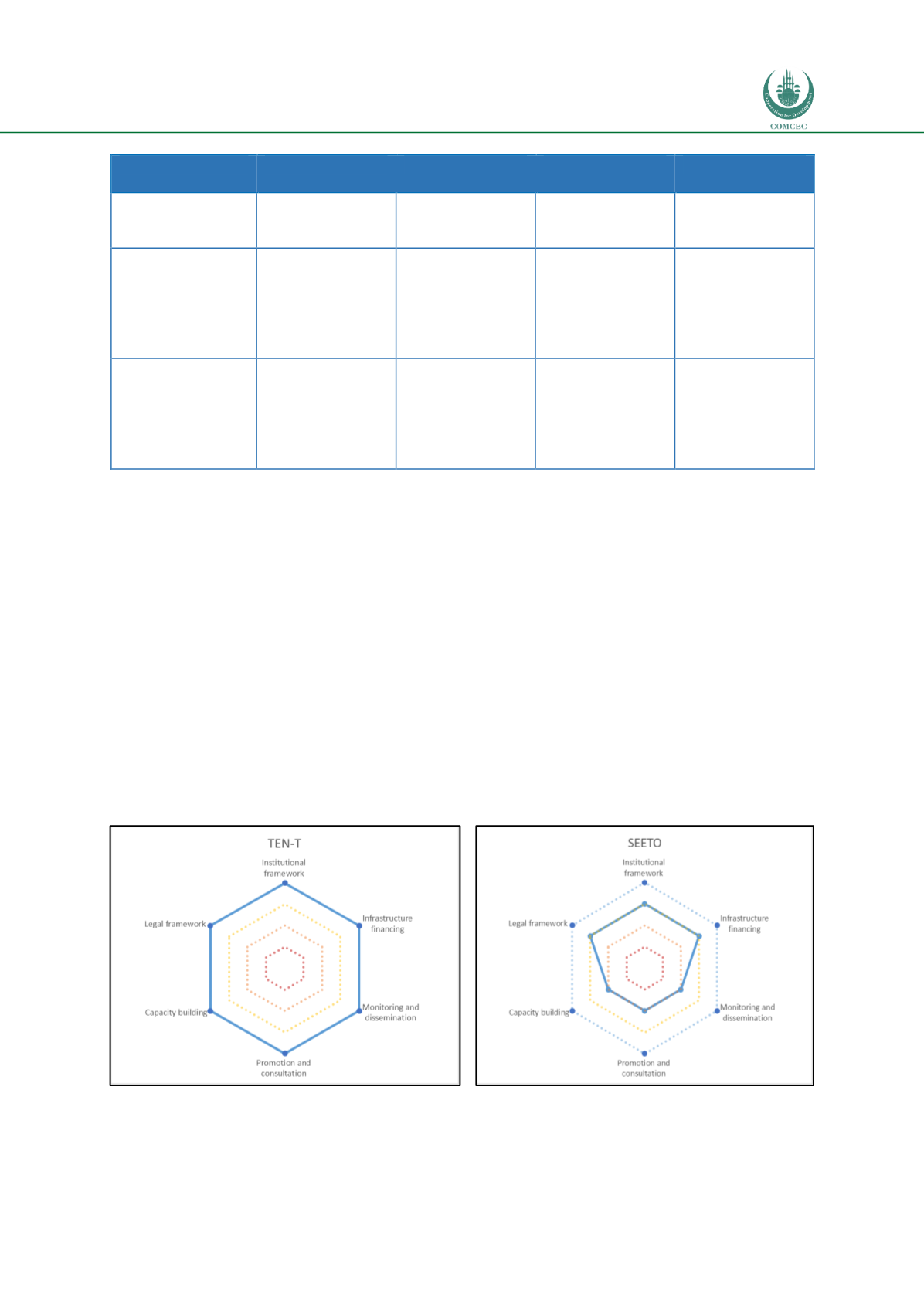

Governance of Transport Corridors in OIC Member States:
Challenges, Cases and Policy Lessons
123
Governance
domains
Information
exchange
Coordination
Cooperation
Integration
and
dissemination
standards or
formats
with more
harmonized
standards
example in joint
publications.
management and
publication
6.
Corridor
promotion
and
stakeholder
consultation
Little promotion,
mainly to identify
key stakeholders
to set up corridor
governance model
Joint promoting
and attracting
more stakeholder
support for
corridor
development
Establishing
institution for
promotion and
stakeholders
approach
Advanced
institutions for
promotion and
making sure
stakeholders meet
regularly
7.
Capacity
building:
technical
assistance and
studies
Studies to
establish corridor
objective
Coordinating
studies, but
mostly national
Cooperative
studies and
establishing
institution for
technical
assistance
Studies published
regularly and
dedicated
institution for
technical
assistance
Source: consortium.
Based on the description of the governance domains for the four levels, a number of governance
archetypes can be defined, as presented below, including leading principles:
Information exchange
: exchange of information to facilitate corridor performance;
Coordination
: increased level of coordination;
Cooperation
: a coordinated approach, working closer together, joint systems;
Integration
: integration of systems and working arrangements.
These archetypes can be used to identify the governance development level of a transport corridor.
This can then be the basis for defining actions that best fit that level of governance development. In
the case studies reviewed, both at OIC and non-OIC level, we have placed the corridors in the four
defined development levels, for all seven governance domains. The result of this exercise is
presented in Figure 8.2.
Figure 8.2 Governance levels of reviewed corridors
















